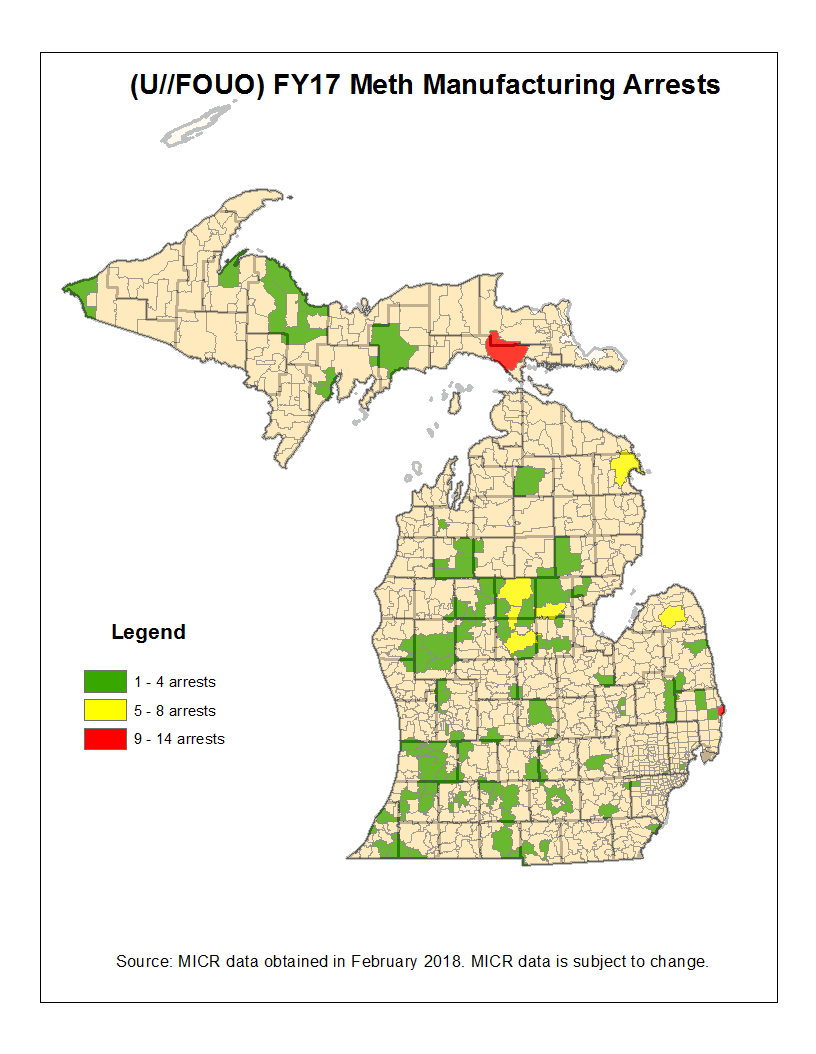Methamphetamine (also known as crystal meth or meth) was initially produced by gangs on the West Coast, but production later moved to small residential home labs. Meth production poses health risks to subsequent purchasers of these residential homes, particularly for younger members of the family.
Reports of meth labs in residential homes remain fairly common. Recent arrests were made in Iron County, Montmorency County and Gladwin County. According to a Michigan State Police Report, there were 215 arrests and lab seizures in 2017. There were also 500 meth-related incidents that required hazardous material clean-up by law enforcement.
 A residence is condemned after a meth lab site is found and removed by law enforcement. A Kalamazoo ordinance sets forth the process for notifying the homeowner and lifting the condemnation. A Grand Rapids homeowner, however, sued the seller and real estate agent after learning that her home was allegedly contaminated from a meth lab. She claims the owner or real estate agent removed the sticker left on the home by law enforcement warning that the house was a hazardous site. And, obviously, not all meth labs are detected by law enforcement or public health officials.
A residence is condemned after a meth lab site is found and removed by law enforcement. A Kalamazoo ordinance sets forth the process for notifying the homeowner and lifting the condemnation. A Grand Rapids homeowner, however, sued the seller and real estate agent after learning that her home was allegedly contaminated from a meth lab. She claims the owner or real estate agent removed the sticker left on the home by law enforcement warning that the house was a hazardous site. And, obviously, not all meth labs are detected by law enforcement or public health officials.
Lead-based paint, which similarly poses problems for children, was banned for use in residential homes in 1978 because of the health risks it posed. Federal law requires lead paint disclosures for the sale of residential homes built before 1978.
Minnesota has specific disclosure requirements for the sale of a home that was used for the production of meth. Colorado has disclosure requirements as well as provisions allowing the purchaser to back out of the contract in certain situations. There are no specific disclosure requirements in Michigan. Is it time for such legislation? The seller disclosure statement required under MCL 565.957 includes disclosure of “environmental problems” but does not include meth labs as an example:
- Environmental Problems: Are you aware of any substances, materials, or products that may be an environmental hazard such as, but not limited to, asbestos, radon gas, formaldehyde, lead-based paint, fuel or chemical storage tanks and contaminated soil on the property.
unknown___ yes___ no___
If yes, please explain: _____________________________________
There are due diligence steps a purchaser can undertake to protect themselves. In addition to checking for radon, the purchaser can use a home test for detecting meth residue or hire a company, such as
Anew Damage Restoration,
Crisis Cleaning,
Enviro-Decon, to check for and remediate contamination if detected.